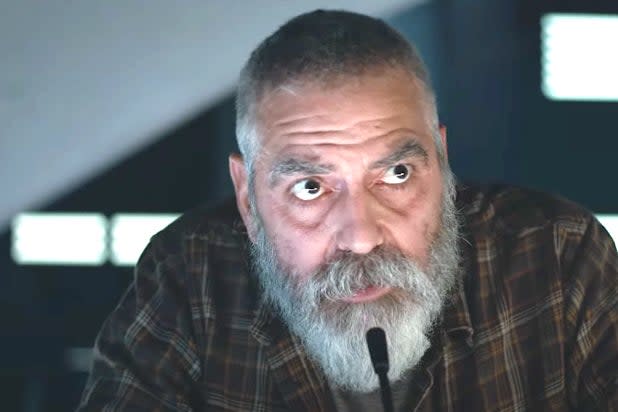Hey Netflix, What the Heck Happened to Your Blurbs? | Commentary
You are reading an exclusive WrapPRO article for free. Want to level up your entertainment career? Subscribe to WrapPRO.
Right around this time last year, Netflix laid off about 400 workers. I don’t know who precisely got the axe — the streamer isn’t exactly the most transparent of companies; it usually doesn’t even reveal how many viewers watch its content — but I have a strong hunch one department in particular was all but wiped out.
That would be the poor, unheralded scribes who used to write Netflix’s summaries. You know, the one or two-sentence descriptions that, once upon a time, helped you decide whether or not you wanted to watch a particular show or movie. It’s an incredibly important part of any streamer’s ecosystem. A snappily written blurb crafted to pique a scroller’s curiosity can make all the difference between whether a film or series finds its audience or languishes in the lonely dungeons of streamer oblivion.
In recent months, though, there’s been nothing about Netflix’s descriptors that pique anything but annoyance. Whoever is writing them now — an AI robot, perhaps, or maybe a roomful of chimps with typewriters — keeps forgetting to include really important bits of information. Like, say, what the film or show is about.
The other night, for instance, I happened to be scrolling through Netflix’s “Ominous Movies” cue and landed on a film called “Silence.” Here’s how the streamer tried to entice me to watch: “This 2019 horror film featuring Stanley Tucci and Kiernan Shipka was directed by John R. Leonetti.”
Wait, not the John R. Leonetti?
Seriously, that’s all the information Netflix felt I needed in order to make a reasoned decision on whether I should press play or not? Not surprisingly, I scrolled on.
A few more panels along the cue, I ran across something called “The Midnight Sky.” “This 2020 dystopian drama based on the book by Lily Brooks-Dalton is directed by and stars George Clooney.” Again, much as I admire Clooney, even with a beard, it would have been nice to have some inkling of a plot.

I continued to scroll, pausing on “Awake.” “This 2021 dystopian sci-fi thriller features Gina Rodriguez and Jennifer Jason Leigh.”
It was almost as if Netflix was taunting me, daring me to take out my phone and Google a more proper description (or to log onto Netflix on my laptop browser, where for some reason some of these films have slightly more plot-driven descriptions than on the TV app). But, as Netflix probably somehow already knows, I’m way too lazy to do that.
Longtime Netflix subscribers may remember that this isn’t the first time the streamer has botched its blurbs. Back around 2015, a flaw in the company’s algorithm mixed up a bunch of descriptors, which back then still included plot points and other pertinent information, mistakenly putting them on wildly wrong movies. But at least that error was hilarious, like when Disney’s G-rated animated “Tinker Bell” ended up with the summery for the R-rated indie drama “Tangerine.”
“Her pimp cheated on her while she was locked up,” Netflix wrote alongside a picture of a smiling Tink fluttering her wings. “Now this working girl sets out to claim her pound of flesh.”

What’s going on now, though, doesn’t feel like an algorithm mistake. It feels more like a deliberate, woefully misguided corporate decision to downplay descriptors, which require a bit of paid human skill to do properly, in favor of the human-effort-free auto-trailer, which instead streams a supposedly alluring bit of preview footage whenever you pause a few seconds on a panel.
Problem is, pretty much everyone hates auto-trailers. In fact, the feature proved so unpopular when it was introduced in 2017, Netflix eventually felt compelled to post an apology and add a toggle that allowed subscribers to turn it off. “We’ve heard the feedback loud and clear — members can now control whether or not they see autoplay previews on Netflix,” the streamer posted in a since-deleted 2020 tweet.
Still, Netflix didn’t make it easy to get to that toggle — to this day, you have to log in on a browser and dip into account management in order to find it and switch it off. And by keeping auto-trailers on by default, the company is signaling a continued belief that shoving previews into subscribers faces remains the best, or at least most cost-effective, way to drum up an audience for any particular piece of entertainment.
Also Read:
Warner CEO David Zaslav Is Having a Terrible, Horrible, No Good, Very Bad Month
They’re wrong, of course. And they’re wrong in a way that indicates a pretty basic misunderstanding of how people prefer to use their service.
Netflix insists it hasn’t made any major tactical changes to its descriptors strategy, but to this longtime subscriber, it sure feels like the service now wants viewers to scroll the platform the way they used to flip through TV channels, serendipitously stumbling onto content — in this case, previews — that grabs their attention and keeps them lingering. But the reality is that Netflix was always built more like an old-style video store, where shoppers could browse the VHS boxes on the shelves, studying the taglines and key art copy, until they found something that tickled their fancy.
And that’s why firing all those descriptor writers — if they were indeed part of last summer’s layoffs — was such a huge mistake. Because lately clicking on Netflix has been like venturing into a video store where all the boxes are blank and the video store clerk tries to get you to rent them by shouting random dialogue into your ear. Netflix hasn’t just made looking for something to watch more difficult than it used to be, it’s made it more unpleasant.
They should hire back those writers.
Also Read:
Inside Pixar’s Existential Crisis and How It Can Bounce Back After Disney+ Stole Its Mojo

